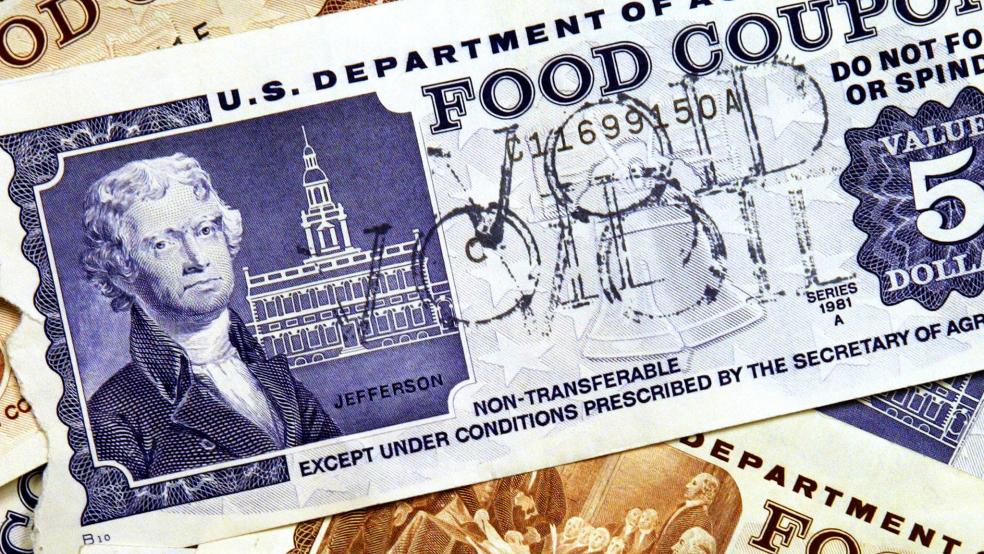After years of growth driven by the worst recession of modern times, the massive cost of the federal food stamp program for lower income people declined last year as a share of the economy and is likely to continue its downward trajectory, according to a new study.
Food stamp caseloads grew significantly between 2007 and 2011 as the recession and lagging economic recovery led more low-income households to qualify and apply for help, according to the new report by the Center on Budget and Policy Priorities released on Monday. However, the caseload growth slowed substantially in 2012 and 2013, and then fell by about 2 percent in fiscal year 2014.
Spending on food stamps fell by 11 percent in 2014 as a share of the gross domestic product and by nine percent after adjusting for inflation.
Fewer people participated in the program in each of the 15 months between September 2013 and November 2014 than in the same month one year earlier, according to the most recent government data available.
Indeed, 1.5 million fewer people participated in the food stamp program in November 2014 than when participation peaked in December 2012, according to the new study. In 43 states, the average number of participants was lower in fiscal year 2014 than in fiscal year 2013.
The Congressional Budget Office expects that as the economy continues to improves, the number of participants will fall by about 2 to 4 percent each year over the next decade: from 46.5 million in fiscal year 2014 to 46 million in 2015, 44.3 million in 2016, and 32.8 million by 2025. By 2025 CBO forecasts that the share of the population receiving SNAP will return to close to 2007 pre-recessionary levels of about 9 percent.
Many experts anticipated this trend, despite previous reports that that demand for food stamps – the Supplemental Nutrition Assistance Program (SNAP) – persisted even as the overall U.S. unemployment rate steadily declined to 5.7 percent since the recession officially ended in June 2009.
Although the economy is improving and plenty of government and privately funded food programs exist to help those in need, an alarming number of people are still going hungry in this country, as The Fiscal Times reported late last year.
However, a combination of a steadily improving economy and a tightening of eligibility standards – including the return of a three-month limit in some states for unemployed childless adults -- contributed to the declines in caseloads, according to the CBPP study. Moreover, the end of the 2009 Recovery Act’s benefit increase contributed to a 7 percent drop in SNAP spending in 2014 -- about $450 million a month.

Top Reads from The Fiscal Times:





